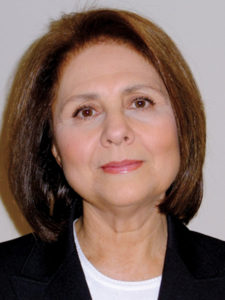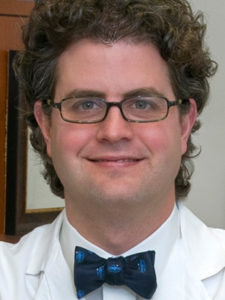
Rheumatologists not using ultrasound imaging are missing a new and often vital diagnostic tool.
Long experience in Europe has shown that ultrasound can bring significant added value to the rheumatology exam when dealing with musculoskeletal pain, nerve entrapments and vasculitis. Recent guidelines from the European League Against Rheumatism (EULAR) focus on the utility of ultrasound in assessing a variety of pain syndromes and vascular abnormalities that rheumatologists often deal with.
“Ultrasound is able to demonstrate the nerve and soft tissue anatomy in very great detail,” said Carlo Martinoli, MD, Associate Professor of Radiology at the University of Genoa, Italy. “Ultrasound has higher spatial resolution than MRI to depict subtle abnormalities of small sensory nerves and terminal branches. Ultrasound can be considered the technique of choice to image nerve entrapments.”
Dr. Martinoli will kick off a three-day series of Anatomy in a Day symposia with a look at Sonoanatomy of Lower Extremity Nerveson Sunday from 11:00 am – 12:30 pm. The sessions will focus on the uses of ultrasound in three different areas.
On Monday from 11:00 am – 12:30 pm, Demystifying Low Back & Lateral Hip Pain: New Patho-Anatomical Perspectiveswill explore the diagnosis and treatment of two of the most difficult and non-specific pain syndromes rheumatologists see.
“The study of the static and dynamic sonoanatomy of the different components of the lateral region of the hip can contribute in a relevant way to clarify the diagnosis,” said Ingrid Moller, MD, PhD, Assistant Professor of Anatomy at the University of Barcelona and Director of the Poal Institute of Rheumatology in Barcelona. Dr. Moller co-authored the EULAR ultrasound imaging guidelines published earlier this year.
Lateral hip pain is often diagnosed as bursitis, but imaging studies typically show a very low prevalence of true bursitis. Greater trochanteric pain syndrome (GTPS) is a more likely cause. GTPS has also been identified in up to 30 percent of adults with low back pain. Generalized myofascial pain can also be a source of confusion when evaluating patients with GTPS.
“GTPS often mimics pain generated from other sources,” Dr. Moller said. “We will discuss the anatomy needed to understand the relationships between the different structures, the clinical history and physical examination as well as the therapeutic possibilities, including ultrasound-guided injections.”
Ultrasound is also finding important applications in assessing vascular disease. On Tuesday from 11:00 am – 12:30 pm, Supra-Aortic Vasculature Anatomy, Physiology & Pathoanatomy will explore the growing use of sonography in the detection of vasculitis.

“Rheumatologists probably rely more on CAT scans and MRI compared to ultrasound,” said vascular surgeon Christopher Abularrage, MD, The Bertram M. Bernheim Associate Professor of Surgery and Director, Multidisciplinary Diabetic Foot & Wound Clinic at The Johns Hopkins Hospital.
He will discuss the use of ultrasound in the supra-aortic vascular tree to diagnose vasculitis and distinguish vasculitis from atherosclerotic disease.
“CAT and MRI can give you anatomic information of the vessels,” Dr. Abularrage said. “Ultrasound can show you directional flow, velocities, the degree of stenosis, even the inflammatory extent within the wall of the artery. It is usually the first-line diagnostic test of choice in looking at these vessels.”
The growing use of ultrasound to identify vasculitis is one reason rheumatologists have been paying more attention to inflammation of blood vessels in recent years. Another is the 2017 approval of tocilizumab to treat giant cell arteritis (GCA) by the Food and Drug Administration.

“Rheumatologists like joints, but we also have other organs that are not so well known to many rheumatologists, including blood vessels,” said Wolfgang A. Schmidt, MD, Professor of Rheumatology at Free and Humboldt Universities, Deputy Director of Immanuel Krankenhaus Berlin and Senior Rheumatologist at the Medical Center of Rheumatology Berlin-Buch in Berlin, Germany.
“Large vessel vasculitis is very much en vogue, not only because of new drugs for vasculitis and more drugs on the way, but also because of major advances in imaging. The introduction of fast-track clinics including ultrasound of temporal arteries and extracranial vessels can prevent vision loss in GCA. Ultrasound is the most effective technique. In experienced hands, the diagnosis of suspected GCA can be confirmed immediately.”
The ACR offers Musculoskeletal Ultrasound Certification in Rheumatology—RhMSUS™ to those who perform musculoskeletal ultrasound as part of their practice of rheumatology. Visit rheumatology.org/Learning-Center/RhMSUS-Certification for more information.


